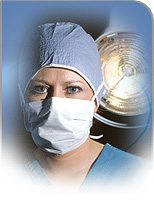|
|
| Computed Tomography Technologist | |
A computed tomography technologist (CT technologist) produces 3-dimensional images of the internal anatomy. A CT technologist operates a special x-ray machine that rotates around a patient in a procedure called a CT scan. As the x-ray machine rotates, it captures anatomical information from different angles and levels in a process called cross-sectional imaging. At each rotation, the x-ray unit takes a single snapshot of the internal anatomy. A special computer then compiles all of these single snapshots to produce a single image of the organ or tissue under study. The CT technologist prepares the patient for the CT scan, positions the patient within the x-ray unit, operates the machinery during the exam, and develops the images captured during the CT scan. This type of imaging allows physicians to see the insides of organs and tissues. CT scans play a major role in the detection and treatment of disease.
The majority of CT technologists work in hospital settings. However, they also work in surgery centers, imaging centers, physician?s offices and clinics.
Educational Requirements and Resources
In terms of education, this position requires an individual be a graduate of an
accredited radiologic technology or radiation therapy educational program. After
the education process is complete, an individual must then become a registered
technologist in either radiologic technology or radiation therapy. (For specific
educational requirements, registration requirements, and a listing of educational
programs in the state of Ohio, please click on the following:
Radiologic Technologist (Radiographer),
Radiation Therapist).
After initial registration, individuals must then pass an advanced level registration examination in the area of computed tomography given by a nationally recognized organization such as The American Registry of Radiologic Technologists. Individuals are eligible to take the examination only after completing a minimum number of clinical training hours in areas pertaining to computed tomography. After completion of clinical requirements, an individual may then take the examination. Upon passing the examination, an individual becomes a registered computed tomography technologist. For additional information on computed tomography technology as a career, please visit the American Society of Radiologic Technologists.

|
For More Information Job Line: (419) 226-7020
Fax |
| Map & Directions |